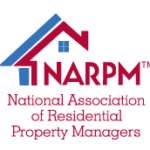
As a Philadelphia property manager I’m a fan of buy and hold and the BRRRR method. But as a property investor - I’m an even bigger fan!
That being said, if you’re going to go down this path, you will want to know how to increase the rent and the return from your Philadelphia rentals. Doing so encompasses all factors of property management. Leasing faster and to higher quality tenants will increase your return. Renting for a higher price and increasing the rent upon renewal will as well. And so will preventing maintenance problems before they come up, as well as increasing tenant retention. But how do we achieve all of these ends?
Related: Reduce water damage in your rental property
Well, I’m glad you asked. Here are 13 of the best ways, in this humble property manager’s opinion, to do so.
-
Improve the Appearance of the Front of the Property
It’s often noted that people make up their minds about you in seven seconds. In other words, you don’t have long to make a first impression. Neither does your rental. As I noted in my last article, simple aesthetic improvements such as window shutters, painting the front door, cleaning up trash and unwanted mail, adding window boxes or trees, replacing the mailbox or address numbers and the like can be hugely important. On every block in Philadelphia, there are endless examples of houses with and without those aesthetic improvements:
Sometimes all we do is kill off weeds, cut back straggly branches a tree in front, add a window box beneath the windows, paint the front door, and add some bark mulch in the flower bed. A total expense of maybe $400 is all it takes to go from an ugly, low value rental to a desired one. And that can make an incredible difference in both getting a property rented quickly and getting top dollar for it.
Related: What condition does my home need to be in to be rented?
-
Quality Advertising
Occasionally I hear landlords say “all we need to do to rent a house is put a sign in the yard.” I think this is the wrong approach. As another property manager—put it:
“If all you have is a sign in the yard, then you won’t have as much interest as if it was online everywhere. Fewer prospects means less demand, and when the supply stays the same, the only consequence is a lower price.”
That’s Economics 101 for you.
Put simply, renting a property with only a sign probably means you are grossly under-renting it.
Furthermore, you want to take high quality pictures. If you can afford to invest in a top-end camera, it will pay for itself and much more. Just compare two photos - One taken from with an old cellphone and the other from a high end camera. Which do you think is more likely to get that person scrolling Craigslist to call you?
Also, make sure to take pictures at about a 30 degree angle. Head on pictures make properties look very small, and that is always a factor.
-
Make Sure the Unit is Well Lit and Smells Good for Showings
It should go without saying that you should clean a unit before showing it. But also, make sure the lights are on and blinds are open so the unit is well-lit when the prospect comes to look at. Dark rooms look smaller and less welcoming.
Also, put some air fresheners in the unit to make it smell pleasant. As the site Fifth Sense notes, “The sense of smell is closely linked with memory, probably more so than any of our other senses.” In other words, if the property smells good, then when the prospect goes home to debate which unit they want of the many they’ve seen, yours will stick out in their memory.
I even heard of one person who baked cookies before prospects showed up. Now that’s an inviting smell sure to get a signature on the bottom line!
-
Don’t Just Show… Sell
If you’re just opening the door and hoping the prospect will like your unit (or if your property manager is), you’re doing it wrong.
There are three great methods for selling during a showing:
- Building Rapport
- Using Anchors
- Using Reciprocation
If you’re doing the showings (or have hired someone to do them), you should be using at least the first two and maybe the third.
Building rapport just means that you are friendly and open with them. Be genuinely interested in them. Ask questions and just shoot the breeze with them a bit. At the same time, don’t oversell or be pushy. People want to rent from people they like.
Anchoring occurs, according to Nobel Prize-winning psychologist Daniel Kahneman, “…when people consider a particular value for an unknown quantity before estimating that quantity.” (Thinking, Fast and Slow, 119-120).
In other words, if you say that you think the house is 1,200 square feet, you have anchored in the prospect’s mind that the house is around 1,200 square feet. If you ask them to guess what they think it is, they will likely guess between 1,100 and 1,300 (assuming your number is in the ballpark, of course). If, on the other hand, you say you think the same house is 900 square feet, they may know that sounds too small but will probably guess between 1,000 and 1,200 square feet. So their answer will change solely because of your anchor.
But anchors can be qualitative, too. So when I was showing houses, I would often say something like “I love this rental” or the “the kitchen in this house is amazing” before opening the door.
Finally, in some cases, particularly in the hot Philadelphia rental markets, it might make sense to use the rule of reciprocation. As Wikipedia describes it, “By virtue of the rule of reciprocity, people are obligated to repay favors, gifts, invitations, etc.” Psychologically, this works by people wanting to return a kindness (say renting from you) if you do something nice for them.
This may feel manipulative, but you aren’t going to convince someone to rent a turd from you if you give them five bucks. If you are renting a good property, what the Rule of Reciprocation does is set you apart from you competition’s equally good property. Putting such offers in your advertising will also help elicit traffic to your rental properties.
So, for example, in some Philadelphia, PA, rental markets there is an oversupply of student housing, which one neighborhood has a lot of. So we started offering a free pizza coupon to a popular college pizza shop just for viewing one of our properties. One year, we even offered concert tickets to local events being put on by an EDM productions company a friend of mine was partners in. There are lots of possibilities like this. Let your mind go wild.
-
Don’t Start Your Price Too Low… Usually
The basic principle with apartment rents is that if you have low occupancy, you can’t raise your rent. But if your occupancy is around 90 to 95 percent, then it’s time to increase the rents.
With houses, though, it’s much harder to know what to rent a place for since there’s only one of it. Yes, you can comp it out on Craigslist, Zillow or RentRange or you can ask the neighbors, but you can’t be perfect.
My recommendation is to approach renting a house from the perspective that you can fix a property priced too high, but it’s hard to fix one priced too low. If you under-rent a property, you’re stuck with it. But if you set the price too high, you’ll know quickly it’s too expensive because you aren’t getting any calls. Then you can quickly adjust the price downward. So start near the top of the range you think it can rent for.
Of course, you don’t want to go crazy with this. Every day a rental unit sits on the market means rent that is lost forever. And if you have a lot of vacancy or it’s in the middle of the winter and few people are looking for a rental, you should certainly be more aggressive. But in most cases, it’s better to start at the high range than the low.
-
Screen, Screen, Screen—and Then Screen Some More
Take it from someone who owns a top property management company: A high rent is useless if you’re settling for bad tenants. Take these two scenarios with the same house. One tenant rents it for $600/month and stays there all year. The other rents for $700, but you have to evict the tenant and lose two months of rent plus the costs above the deposit to turn over the unit and the cost of the eviction. Here’s how it turns out:
With any sort of loan on that property, it would almost certainly have been upside down with Tenant 2.
Remember, it’s better to have a property sit vacant than to rent to a bad tenant. More than once, we’ve taken over properties from landlords in distress or from other property management companies and had a tenant do over $10,000 in damage. That kind of thing will ruin your cash flow for quite some time. On the flipside of that, we have never placed a tenant that cause more harm than their security deposit covered. Why? Screening!
Make sure to check for evictions, their criminal record and credit, and get landlord and employment references. We don’t accept evictions nor do we accept felons unless they are very old. The tenants should also make more than three times the monthly rent in income.
Finally, I would recommend turning over your employment and landlord references a credit reporting agency. There’s an incentive to hear what you want to hear if you check yourself, and that can bias your evaluation when talking to landlords and employers. Then you push through marginal prospects you probably should have declined. Third party companies couldn’t care less, so you don’t get a blurry image when getting landlord and employment references.
-
Always Raise Rent Upon Lease Renewal
As I once heard Joe White put it, “Tenants expect you to raise their rent each year, so don’t disappoint them.” These increases will at least keep your rent the same in inflation-adjusted terms and will often improve your bottom line.
Remember, assuming you are cash flowing, every additional dollar you can get in rent is pure profit.
That being said, it’s also important to let tenants know it’s coming. We inform them their will almost certainly be a rent increase each year when we sign the original lease. As White puts it on his Grow Property Management Blog:
“You should also raise your rents every year, even if the market has not gone up. Train your tenants to expect some annual rent increase. Perhaps it’s only $15 to $20. This is called a nuisance increase. It’s certainly not enough for a tenant to move out, but it sure does help your numbers”.
-
Charge More for Month-to-Month Rentals
We don’t rent month-to-month to begin with, but we will allow tenants to switch over to a month-to-month arrangement once they have completed a year lease.
But we’re not going to do it for free.
Grow Property Management owner, Joe White explains a great way to do this:
“When raising the rent, try this trick often used by marketers: Don’t tell them what the new rental price is going to be, but give them three price options to choose from. Think about it. Almost every big business offers three price tiers…
By offering three choices, individuals tend to compare the choices given, rather than comparing the price to other businesses. A coffee at Starbucks may be ridiculously priced, but by giving the customer options—the “Tall” for $3.25, the “Grande” for $3.75, or the “Venti” for $4.25—people rarely even consider the $0.99 cup of coffee they can get at the local diner across the street”.
Thus, Joe gives tenants an option of month-to-month, a six-month lease, and a year lease. The shorter the lease, the higher the price.
-
Allow for Pets and Charge Pet Rent
Remember what my property manager friend said: “Fewer prospects means less demand, and when the supply stays the same, the only consequence is a lower price.”
While I wouldn’t recommend renting to people with dogs in apartments (maybe I’d allow one cat), with houses, I absolutely recommend it. Opening up your property to people with pets increases the number of prospects—and therefore demand and therefore price.
The reason is that many people want to rent houses in large part because they have pets. And Americans love, love, love their pets. It’s the one thing (other than that murder is bad) that Republicans and Democrats seem to be able to agree upon these days. One survey found that 62 percent of Americans have a pet, and of those who do, 95 percent considered their pets to be “members of the family.”
Pets do some damage, though. Luckily, you can cover for that with a non-refundable pet deposit (we charge $250) and pet rent (we charge $25 a pet per month). We usually set a limit of three pets and do not allow dangerous breeds of dogs.
We probably make more from pet rent than we lose in damages, but even if these charges are completely offset by more maintenance, you have dramatically increased the pool of potential renters, and with more demand comes a higher price.
-
Maintenance and Preventative Maintenance
Some of the best ways to increase returns is to lower expenses. Preventive maintenance can do just that. You should not rely on tenants to replace furnace filters, clean off A/C compressors, or clean the gutters. But these small repairs can save you thousands of dollars in HVAC and foundation repairs.
Furthermore, some tenants won’t tell you about leaks for some unknown reason. If leaks festers for too long, they can cause major dry rot and water damage.
Regular inspections can find and address these issues. It’s preferable to do them semi-annually, but even once a year is better than nothing.
Furthermore, good maintenance is the key to tenant retention. After a a tenant signs a lease, their only contact with you is paying rent and maintenance. Neither is pleasant. And if they’re late a month, there’s another unpleasant contact with property management.
But if you provide good maintenance, this will go a long way in keeping you in good favor with your tenants and increasing the odds of renewal. And turnover is often a landlord’s biggest expense, so anything you can do to mitigate it is a good thing for the bottom line.
-
Maintain Contact With Tenants in Other Ways
In a similar vein, if you can find a way to positively maintain contact with your tenants, this will also help with renewals. It could be something as simple as a monthly newsletter or a social media presence.
You could also combine this with your marketing strategy. In addition to offering a pizza coupon to each group that viewed a unit, our Oregon management company also offered pizza coupons each month for those who rented from us. Yes, this costs money, but it not only works as a good marketing ploy. It also means that each month, while those students sent rent in, they got something back. That makes you look more positive in their eyes.
My property manager friend asks for a prospect’s favorite restaurant on the rental applications. Then, if there’s a bad maintenance issue or one we handled poorly, he send them a gift card to that restaurant. It’s more personal (and thus more effective) than a rent discount—and it’s cheaper, too.
Or you could put every tenant who paid on time each month of the year into a raffle and give away a TV or something like that. There are all sorts of ways to maintain a positive line of communication with your tenants, and doing so will help substantially with tenant retention.
-
Charge for Amenities/Perks
Are there any other amenities you can charge for? I know one property management company that implemented a program where tenants can pay for them to mow their lawn each week during the summer months. Not many took us up on it, but it’s another stream of income that was easy to implement.
Another property management company will charge more for amenities, such as adding a storm door or ceiling fan. While they doesn’t make money from this, they do improve their client’s property for free. What other such opportunities are out there?
-
Increase Renewals With a Resident Program
Joe White is the master of this idea. Here’s how he describes his “3-Star Resident Program”:
“When residents move in to one of my properties, I welcome them into my 3-Star Resident program. It doesn’t cost them anything and they get perks by being a part of it. Their ‘anniversary’ becomes a time of celebration. Every year, I give them a choice of property upgrades (costing between $25 and $75 each) for paying rent on time”.
This bonus goes back to the rule of reciprocity mentioned above. It also can act as that gentle shove in the direction of “yes” when someone is sitting on the fence and needs a tiebreaker to decide on whether to renew or not.
And Joe goes further:
“…in the third year, I announce a new program: the VIP program. Starting the fourth year, I return $100 of their deposit”.
These are by no means the only things you can put into such a program, but they’re a very good start.
Conclusion
You should approach the management side of your buy and hold business as not just “what you have to do to own properties,” but instead as a profit making business in and of itself. The more you can raise rents, lower costs, and increase retention, the better your bottom line will be. Good management can save bad investments, and bad management can kill good ones. Be proactive in increasing your rental returns.






